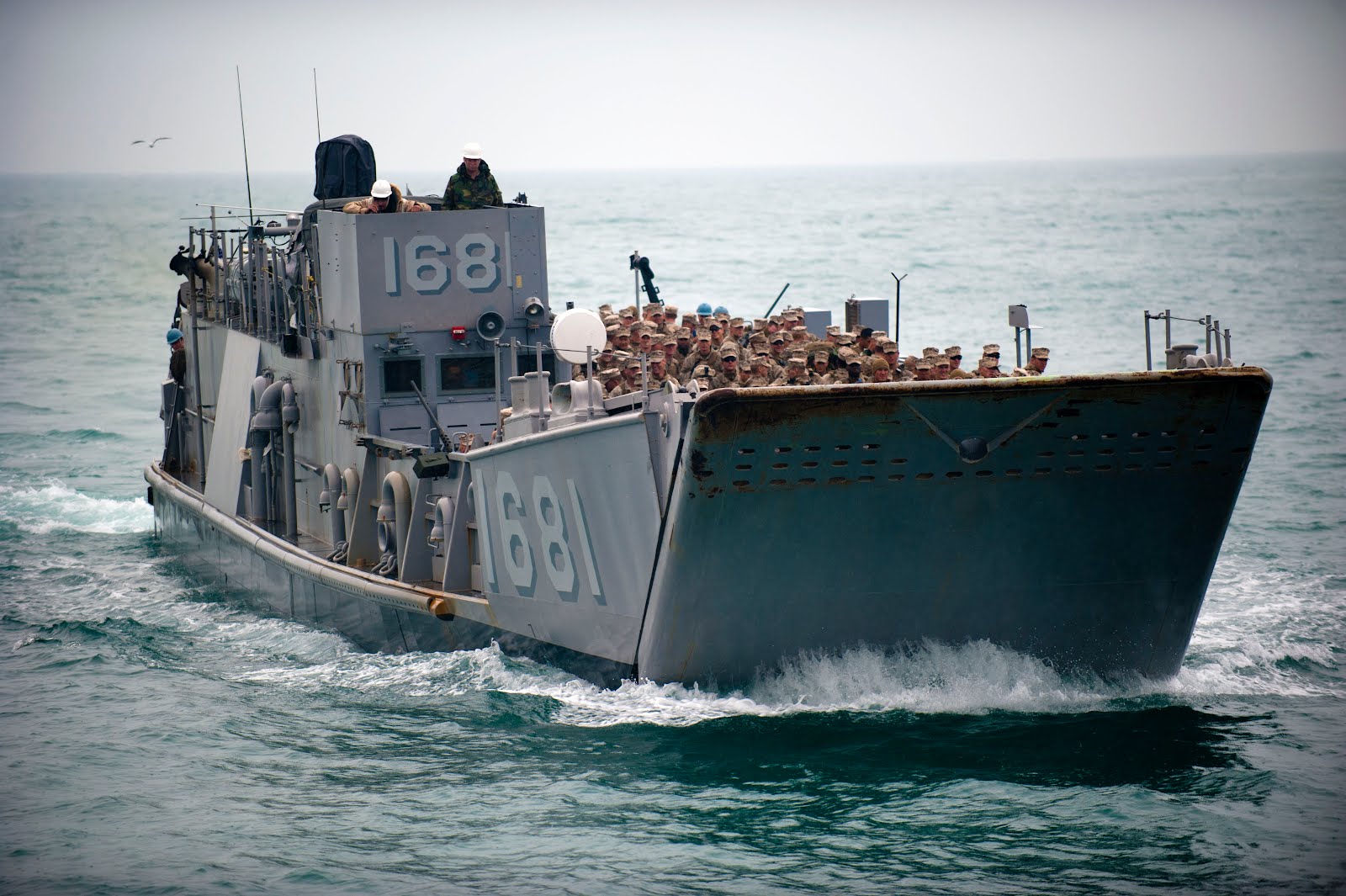
Naval Photos Landing Craft Utility (LCU 1681)
Read our full Royal Navy landing craft test drive report in the January 2022 issue of MBY, out December 2. Foxtrot 8 Royal Navy landing craft specifications. LOA: 43ft 0in (13.11m) Beam: 10ft 6in (3.20m) Draft: 1ft 10in (0.56m) Displacement: 12.5 tonnes Capacity: 35 men or 2 Champs (weight 4 tonnes) Test engines: Twin 185hp Weichair WP6 185-21

Landing Craft, Vehicle and Personnel (LCVP) Royal Australian Navy
List of active Royal Marines military watercraft His Majesty's Naval Service of the British Armed Forces Components Royal Navy Surface Fleet Fleet Air Arm Submarine Service Royal Naval Reserve Royal Navy Medical Service Nursing Service (QARNNS) Chaplaincy Royal Navy Police Royal Marines Royal Marines Reserve Royal Marines Band Service Equipment

Landing Craft Utility (LCU) 1656 Landing Craft, Navy Ships, Defence
ROYAL NAVY VESSELS LOST AT SEA, 1939-45 - BY TYPE . AMPHIBIOUS. Landing craft tank (MkIII) LCT (625-640 tons) - able to carry 5-40t or 11-30t tanks. No.326, lost by weather or mine off Isle of Man, February 2, 1943. No.328, mined off W Greece, December 5, 1944.

Royal Navy landing craft Test driving a humble hero of the Falklands War
The first modernised Royal Netherlands Navy (RNLN) landing craft utility (LCU) Mk IX vessel was launched at De Haas Shipyards in Rotterdam on 9 January. De Haas Shipyards is carrying out the LCU.

Landing Craft Utility (LCU) Navy & Vessels Pinterest Navy ships
The landing craft, tank ( LCT) (or tank landing craft, TLC) was an amphibious assault craft for landing tanks on beachheads. They were initially developed by the Royal Navy and later by the United States Navy during World War II in a series of versions.

Landing Craft Royal Navy
Royal Canadian Navy (RCN) 1939-1945, Landing Craft. LCT (4) 1006 off 'Nan White' Beach on D-Day, 6 June 1944. Landing Ship Tank Mk. 3, 3505, Canadian Vickers Ltd. (Montreal), launched 23 November 1944, commissioned 20 June 1945. Landing craft at an English port before leaving for French coast, June 1944.

Royal Navy landing craft and passenger ferry collide Motor Boat
navalencyc Fifth and last "December special", last post the year ! One reason why the Iowas were modernized at great cost in the first place (in addition to the "big gun advantage" later pushed by the Congress) were the Soviet Kirov class "battlecruisers", which reveal sent shockwaves throughout the western world.
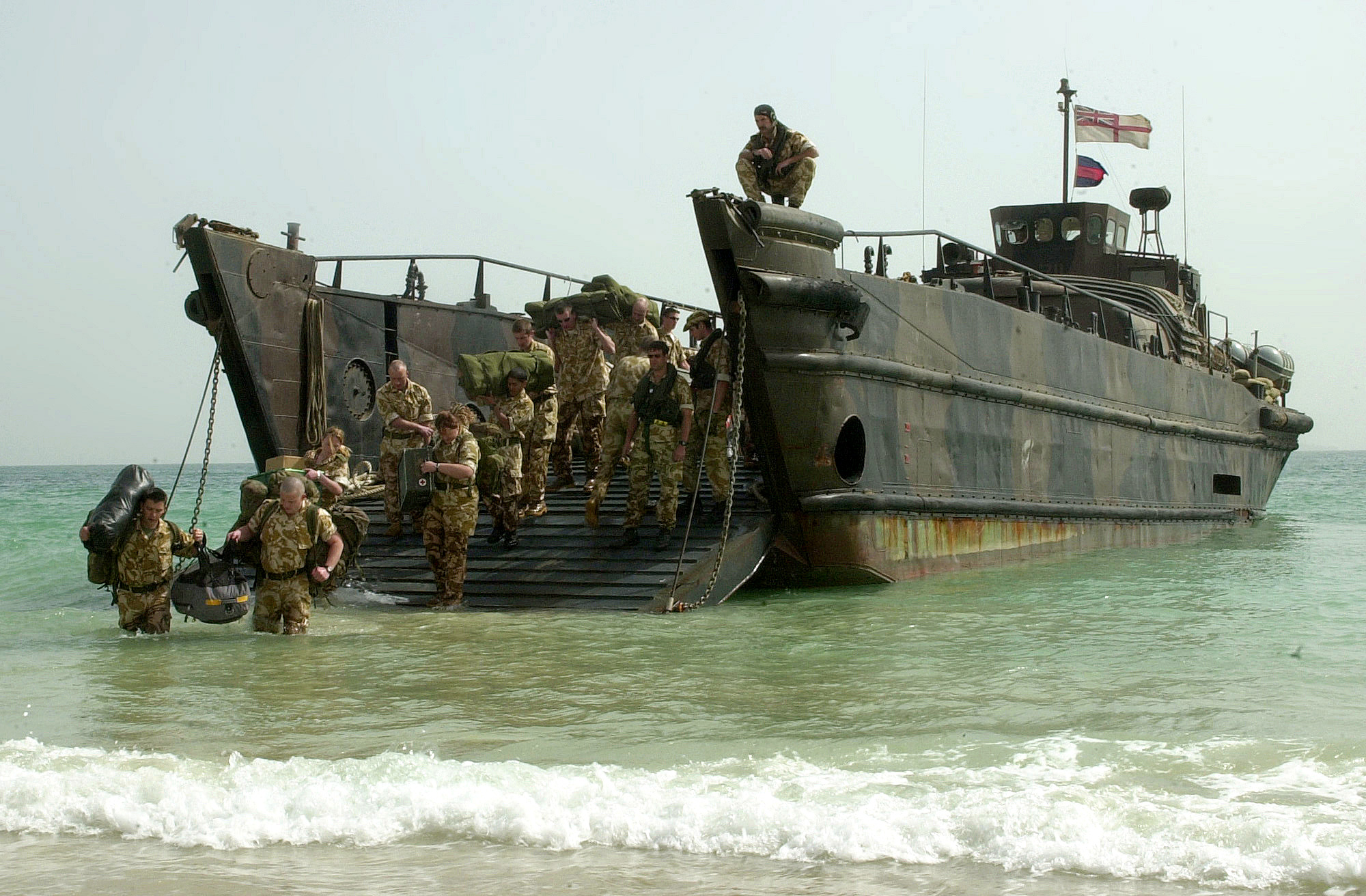
FileRoyal Marines, landing craft utility, 26Feb2003.jpg Wikimedia
A Landing Craft Utility ( LCU) is a type of boat used by amphibious forces to transport equipment and troops to the shore. They are capable of transporting tracked or wheeled vehicles and troops from amphibious assault ships to beachheads or piers. Colombia
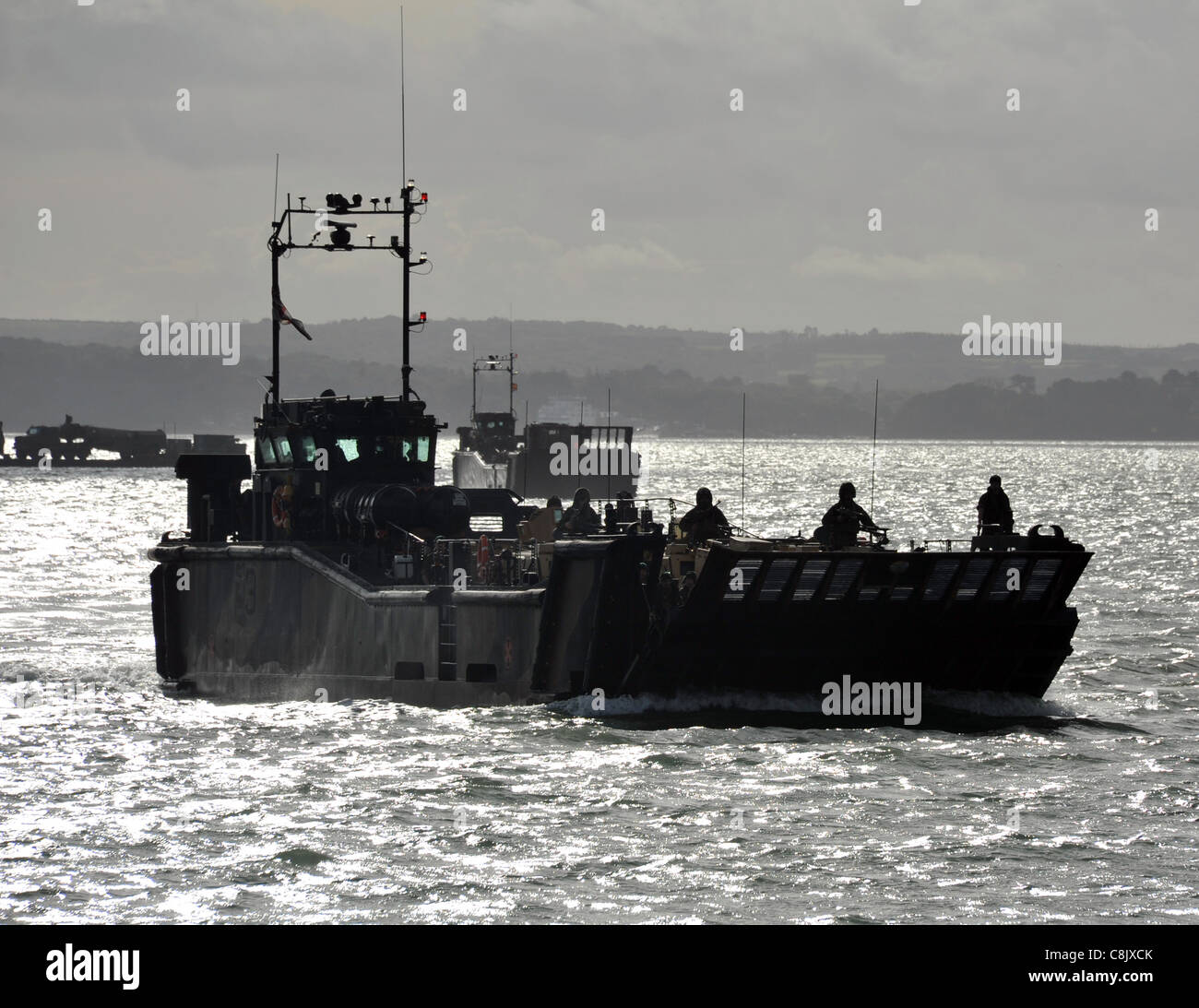
Royal Navy LCU landing craft Stock Photo Alamy
From the 103rd to the 105th..went LCT (HE)'s 2051, 2078, 2234 and 2313. Thus, on D-Day, the 103rd Flotilla comprised Leader LCT (A)2009..with 2014,2150,2283,2285,2306 and 2455, with the 2283 of Lt.

South East Europe, D Day Landings, Landing Craft, Husky, Navy Ships
Landing Craft (Utility) Foxtrot Four was the last Royal Navy vessel lost in the six-week war in the South Atlantic, attacked on the same day - June 8 - as the more well-known tragedy of Sir Galahad and Sir Tristram and the 200 casualties they suffered when bombed.

Landing Craft Royal Navy
The Landing Craft Flak were the first of the support craft, and the only Royal Navy Warship Class to have a German name - Flak being the German for anti-aircraft. By June 1942, six of the LCFs were in service, but the design of LCF1 was not repeated, all LCFs except LCF1 carried light anti-aircraft guns. A total of 46 LCFs were converted.

LHD Landing Craft (LLC) Royal Australian Navy
Royal Marines complete tough landing craft exercises ahead of Mediterranean operations 21 July 2022 Topic: Fighting arms Royal Marines Storyline: 1 AGRM Royal Marines have completed preparations for operations across the Mediterranean this autumn after intensive amphibious exercises in the Netherlands.

The Royal Australian Navy's first four LCM1E landing craft for the LHD
Royal Navy Ships Submarines Aircraft Commando Individual Support Troop Vehicles Landing Craft Musicians Share Favourite Forum Landing craft Amphibious Craft The primary role of Landing Craft is to transfer personnel, vehicles, and equipment onto potentially hostile shores. At a glance 7 crew members On board 29 metres Length of the Mk10 10 knots
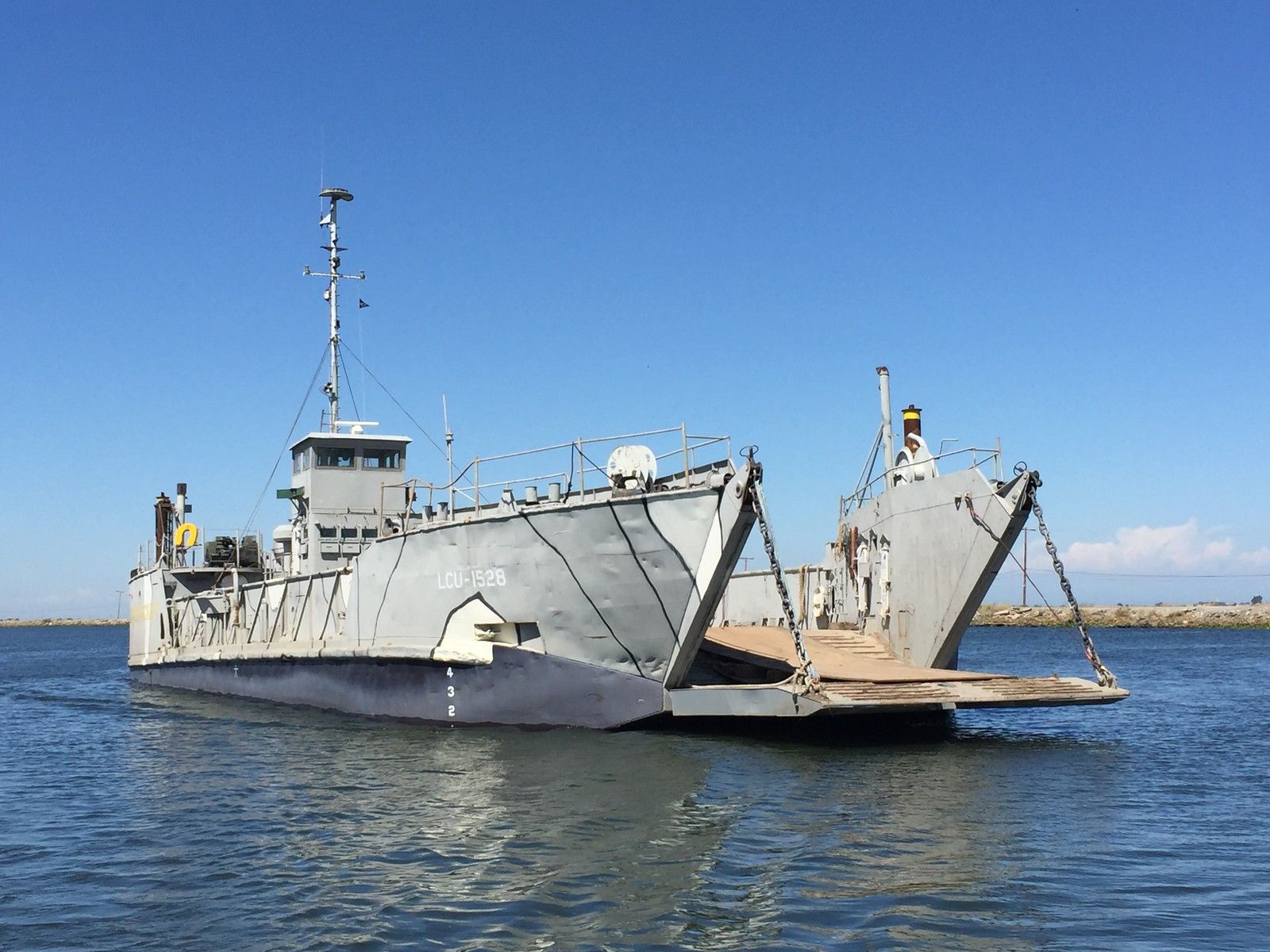
LCU Landing Craft 2015 for sale for 895,000
The UK Royal Navy officer overseeing the Commando Force modernisation programme has set out plans for the acquisition of a new high-speed, low-signature Commando Insertion Craft (CIC) to replace the Royal Marines' current Landing Craft Vehicle Personnel (LCVP) MK 5. Richard Scott 30 May 2023

DDay Royal Canadian Navy, Royal Navy, Remembering Dday, Normandy
Landing craft LCU MK10 At 29 metres long and 7.4 metres wide, our Landing Craft Utility (LCU) can transport up to 120 Royal Marines Commandos or four Viking APVs (or one Challenger battle tank) at a time. The LCU MK10 can travel at speeds of up to at eight knots and has a range of over 600 nautical miles. Stories Featured Stories
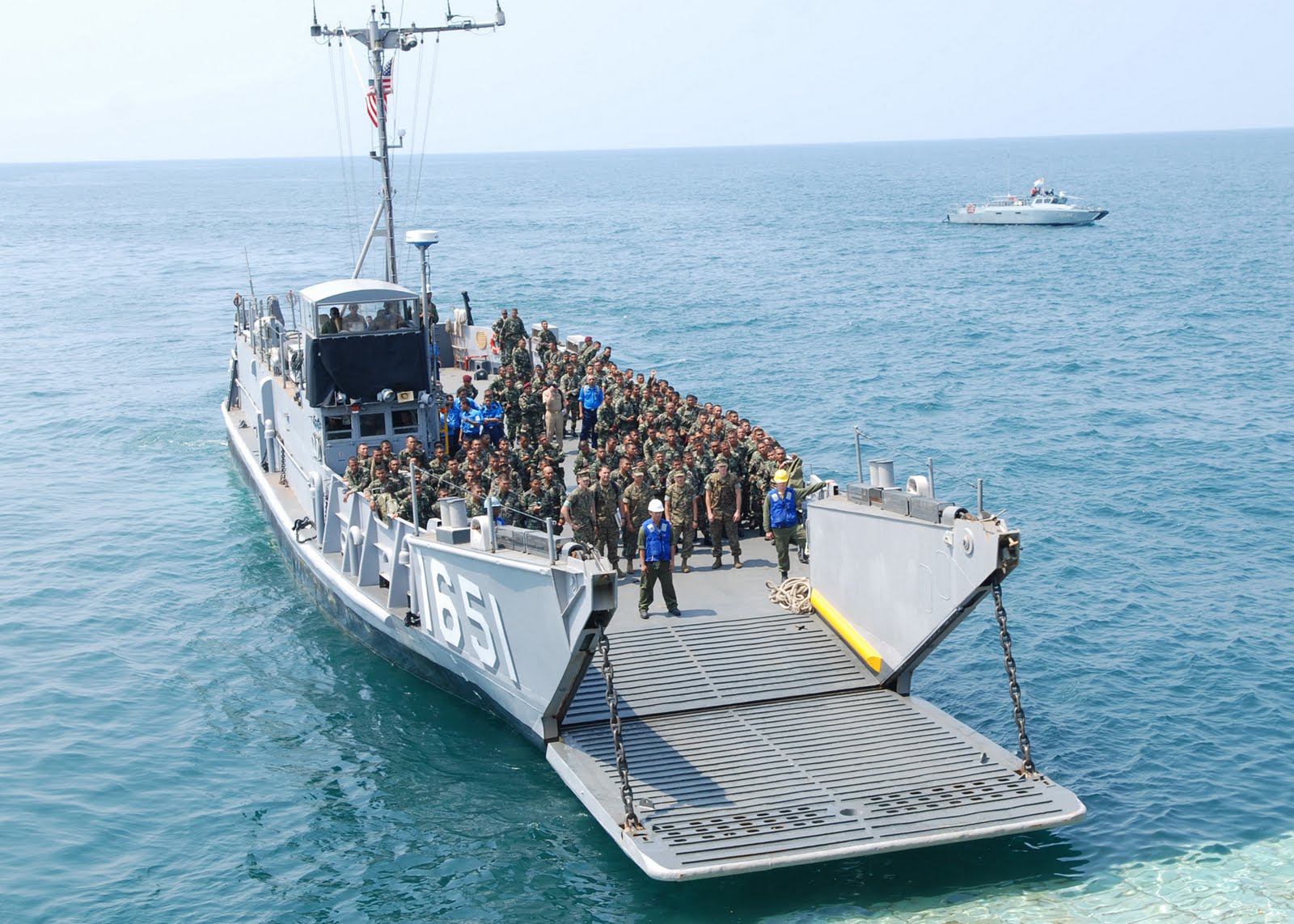
Naval Photos Utility Landing Craft (LCU 1651)
Landing craft are small and medium seagoing watercraft, such as boats and barges, used to convey a landing force ( infantry and vehicles) from the sea to the shore during an amphibious assault. The term excludes landing ships, which are larger.